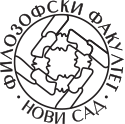A PUSZTA MINT TOPOSZ
Táj, lélek és kultúra összefüggése Móricz Úri murijában
Absztrakt
A XX. század első felének magyar irodalmában a nagyváros-vidék, központ-periféria Nyugat-Európában is meglévő, egymást kiegészítő toposzai mellett megjelenik a falut vagy kisvárost a pusztával, tanyával szembeállító kettősség. A fenti térreprezentációnak megvannak a maga sztereotípiái, de ennél is fontosabb, hogy egy tágabb, lélektani-antropológiai, társadalmi és végső soron ideológiai kontextusba illeszkedik, ami – a XIX. századi magyar lírából és elbeszélő hagyományból tudatosan építkező – Adytól, Móricztól Szabó Dezsőn át Illyésig, Németh Lászlóig végigkövethető. A fenti diskurzus megteremtésében meghatározó szerepet játszik Móricz Zsigmond prózája a Sáraranytól az Árvácskáig, a Kerek Ferkótól a novellák világáig. Ezek közül is kiemelkedik az Úri muri, ahol Móricz egyrészt rendkívül sokféle módon él a tér jelentésteremtő szerepével: úgy, mint a szereplők konfliktusrendszerét leképező motívummal, mint a hősök lelkivilágát tükröző hellyel, vagy mint a magyar múlt örökségét és a jövő lehetőségeit szimbolizáló formával. Ugyanakkor többféle, néha egymásnak ellentmondó szimbolikus jelentést tulajdonít a toposznak, mélyen merítve annak értelmezéstörténetéből. Ennek következtében rendkívül rétegzett, bonyolult összefüggésrendszer fókuszában áll a puszta képe ebben a regényben. Ugyanakkor tetten érhető Móricznak az a törekvése is, hogy a jelkép egymásra rakódó rétegei közt – ha nem is mindig kifejtve, néha csak sejtetés formájában – összefüggést teremtsen. E bonyolult jelentéskomplexum alkotóelemeinek szétválasztása, eszmetörténeti forrásainak feltárása, a Móricz által köztük teremtett kapcsolatok felfejtése lesz a tanulmány témája.
Hivatkozások
Ady Endre. 1910. Petőfi nem alkuszik. https://www.arcanum.com/hu/online-k2iadvanyok/AdyProza-ady-prozaja-1/10-kotet-6E97/cikkek-tanulmanyok-1910- januar1912-december-6E98/34-petofi-nem-alkuszik-703D/ (2021. jún. 1.)
Albert Réka. 1997. Tájak és nemzetek: Kísérlet a „nemzeti táj” fogalmának antropológiai megközelítésére. Budapest: MTA Politikai Tudományok Intézete Etnoregionális Kutatóközpont.
Albert Réka. 2004. „Te a magyarnak képe vagy nagy rónaságunk”, avagy a nemzeti tér táji reprezentációja. In Fehéren, feketén Varsányról. Szerk. Borsos Balázs – Szarvas Zsuzsa – Vargyas Gábor. 81–95. Budapest: L’Harmattan.
Balassa Péter. 2003. Leonóra papírjai. Lejegyezte Márton Andrea. Jelenkor (12): 1137– 1149. http://www.jelenkor.net/archivum/cikk/198/leonora-papirjai (2021. jún. 1.)
Balassa Péter. 2007. Magatartások találkozója: Babits, Kosztolányi, Móricz. Budapest: Balassi.
Baranyai Norbert. 2010. „...valóságból táplálkozik s mégis költészet...”: Móricz Zsigmond prózájának újraolvasási lehetőségei. Debrecen: Debreceni Egyetemi Kiadó.
Bednanics Gábor. 2013. Tér, idő, történelem: (Kon)figurációk a móriczi regényben. In Móricz a jelenben. Szerk. Bengi László – Szilágyi Zsófia. 83–90. Budapest: Magyar Irodalomtörténeti Társaság.
Bori Imre. 1982. Látszat, valóság, történelem. In Uő: Móricz Zsigmond prózája. 16–29. Újvidék: Forum.
Eisemann György. 1993. „Barbárok” a Móricz-prózában. In A magvető nyomában: Móricz Zsigmondról. Szerk. Szabó B. István. 89–102. Budapest: Anonymus.
Fábri Anna. 1991. Jókai-Magyarország. Budapest: Skíz.
Fábri Anna. 1995. Város, vár, adoma. Műhely 18 (2–3): 107–112.
Farkas Ildikó. 1993. A turanizmus. Magyar Tudomány (7): 860–868.
Illyés Gyula. 2003. Puszták népe. Budapest: Osiris.
Margócsy István. 1993. Sárarany. In A magvető nyomában: Móricz Zsigmondról. Szerk. Szabó B. István. 17–25. Budapest: Anonymus.
Margócsy István. 2001. Kísérlet a regény megújítására. In A kifosztott Móricz? Szerk. Fenyő D. György. 22–31. Budapest: Krónika Nova.
Marjalaki Kiss Lajos. 1930. Új úton a magyar őshaza felé. Nyugat (12): https://www. arcanum.com/hu/online-kiadvanyok/Nyugat-nyugat-1908-1941-FFFF0002/1930- 42A394/1930-12-szam-65F694/marjalaki-kiss-lajos-uj-uton-a-magyar-oshaza-fele- 6BF694/iii-napjaink-tudomanyos-allaspontja-12F894/ (2021. jún. 1.)
Móricz Zsigmond. Úri muri. https://mek.oszk.hu/01400/01431/01431.pdf (2021. jún. 1.) Móricz Zsigmond. 1919. A magyar költő: Zempléni Árpád halálára. Nyugat (14–15): https://epa.oszk.hu/00000/00022/00270/07994.htm (2021. jún. 1.)
Olasz Sándor. 2006. Pillanat és távlat: A móriczi és a Németh László-i szövegalkotás interferenciái. In Uő: Regénymúlt, regényjelen. 91–104. Budapest: Széphalom.
Papp Ágnes Klára. 2017. Magyar bűn magyar bűnhődés: Dosztojevszkij és Nietzsche „vitája” Móricz Sáraranyában. Literatura 43 (3): 195–220.
Széchenyi István. 2002–2003. Világ. Jegyzetek és szöveggondozás Velkey Ferenc – Fülöp Tamás. Budapest: Neumann Kht.
Szilágyi Zsófia. 2013. Móricz Zsigmond. Pozsony: Kalligram.
Szirák Péter. 2001. Az ösztön „nyelve” és a nyelv cselekedtető ereje. In A kifosztott Móricz? Szerk. Fenyő D. György. 226–240. Budapest: Krónika Nova.








